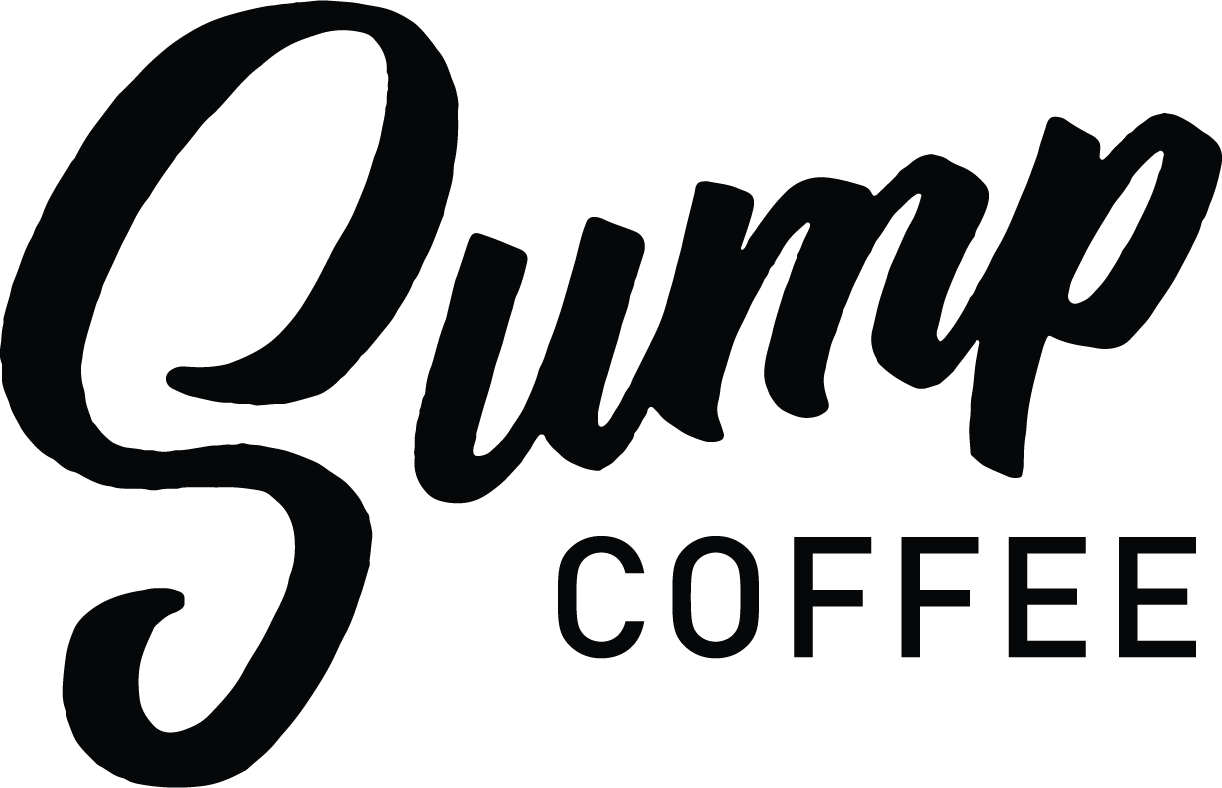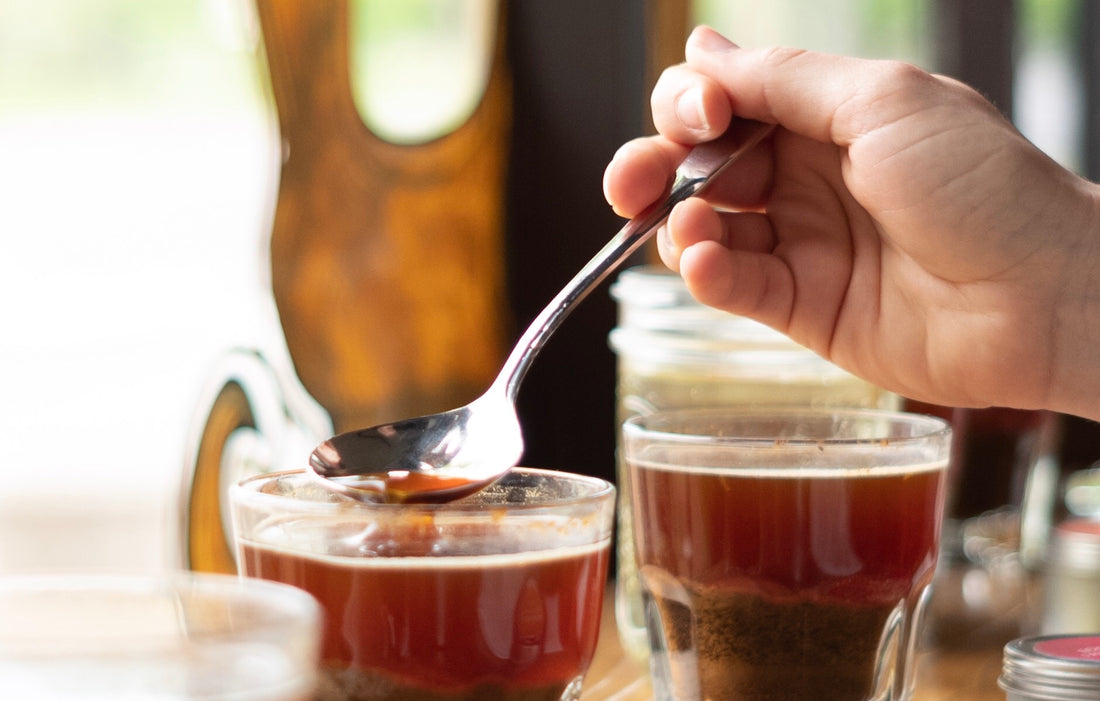Earlier this year I ‘competed’ in the Brewers Cup Qualifiers at US Coffee Champs in Nashville TN. I brewed a washed Ethiopian Yirgacheffe coffee from the Roba family washing station. This coffee was great in its own right, but specifically I noticed a great deal of its complexity was neutralized through a paper filter as opposed to how it presented on the cupping table. I ended up using a Walkurie Beyreuth ceramic brewer to increase the amount of contact time between water and coffee, similar to the immersive extraction the coffee would be subjected to on the cupping table. At the time it made me think a lot about cupping as a brew method and I had some fun conversations about cupping with my co workers as well as some other competitors at Coffee Champs (Wade Preston from Prevail Coffee in particular was a real treat to converse with).
Cupping gets referenced a lot on coffee websites or social media profiles; many cafes and roasters have Cupping Labs now; this summer alone we have hosted an event at our humble south city shop where importers just brought coffee and cupped it. Despite the regular use of the word, I think there is still a lot of mystery around the practice.
For the uninitiated, cupping is a method for field testing various lots of coffee at origin. The gist is, you roast different coffees to perceptibly similar levels of roast color/development, grind them as uniformly as possible, and pour hot water over them in bowls. The coffee extracts by steeping, similar to how a French Press extracts coffee. After a few minutes, you break the crust of coffee grounds that form at the top of the bowl, scrape out any excess grounds from the top, and, as the coffee cools, begin slurping spoonfuls of coffee. For some reason, this method of evaluating coffee remains our best practice as far as evaluating, at the same time and temperature, coffee samples or performing quality control of our own inventory as roasters. So, barring the separate discussion of ‘Is this actually a valuable method for evaluating coffee?’, how do you cup coffee like you know what you’re doing?
The Coffee Standards section of the Specialty Coffee Association’s website tells us that “the ratio of 8.25 grams (whole bean) coffee (+/- 0.25 grams), to 5.07 fluid ounces (150ml) water shall be used. When adjusting due to vessel size, a ratio of 1.63 grams (whole bean) coffee per 1 fluid ounce of water (or 0.055g coffee per 1ml water) shall be used).” Resisting the urge to throw shade at something so mechanistically boring sounding, I will just say it is good to have standards for the practical sake of standards (say for comparing the same coffees at a distance, i.e., a cupping ‘lab’ versus origin buyer). At Sump, I have used a couple variations of this recipe. We typically cup in a roughly 8oz vessel, meaning roughly 237ml of water. Through some math wizardry, I deduced we can cup with a recipe of roughly 11.5 grams of coffee and top off the vessel with 209ml water to achieve a similar ratio to the recommended standard. Cupping reveals one of its flaws though once we begin analyzing post-production coffees side by side with this standardized recipe: darker roasted coffees extract differently from lighter roasted coffees. Again, that’s a discussion for a different day and I continue to digress.
So, let us say we have figured out our coffee ratio; we have a decent grinder and we have uniformly ground our coffee “so that 70-75 percent of the grinds pass through [a] 20 mesh sieve” (i.e. coarser than your v60 grind setting, finer than your French Press grind setting, I guess. I’ve been using 8.3 on our Mahlkonig EK43 grinder which is coarser than any v60 we make in the shop but still finer than our slow drip Kyoto cold brew method); we have our separate cupping bowls/cups/vessels set side by side, with ground coffee in them. The stage is set. At this point, it is helpful to take note of the dry aroma of each coffee. This is our first window into what might be in the cup, before beginning to extract the coffees.
Using 200 degree Fahrenheit water (our water tower is set to 203, I’m just assuming by the time it hits the water it has definitely reached a stable and consistent 200), we cleanly but quickly fill each vessel to the brim. If done correctly, a crust should form at the top of the vessel; more developed or roastier coffees generally form a more stark crust; some lighter or under developed coffees will form little to no crust, or the crust will break apart of its own accord during the steeping process. Start a timer as you begin pouring water. Ideally, if you have a lot of different coffees/lots, you will have multiple hot water kettles and an extra set of hands to help you begin extracting each coffee at as similar a time as possible. Four minutes into the steeping process, I use a spoon to break apart (or fold in) the crust on the cup. A number of aromatic compounds are released by this, so its a good chance to once again evaluate the aroma of a given coffee. After going down the line and breaking apart the crust on each coffee, I make another pass through the line, skimming out the excess coffee grounds/chaff still on top of each cup. The coffee at this point is still too hot to really enjoy or evaluate so feel free to wait a few more minutes before sampling.
Around the 7 minute mark is when sampling can really begin in earnest (or anytime you’re not going to burn your mouth, experiences vary). We taste coffee during a cupping by using cupping spoons (or any soup-like spoon) and taking small samples from each cup and slurping them. I find it helpful to think of coffee flavor profiles in terms of frequencies. As a general rule of thumb, on the cupping table higher frequency notes will be easier to discern while the coffee is warm, while lower frequency notes will dominate the cup as it becomes cooler. Some notes I would consider higher frequency would be the coffee’s fruit acidity/acidities or more tart qualities; lower frequency aspects for me are generally the coffee’s chocolate or caramel-adjacent sweetness, earthy notes, and the coffee’s body. Again, this is just my observation, not The Standard. Coating your palate with the coffee is important and it is interesting to see how aspiration or trilling of the coffee can affect how it tastes/feels/expresses as opposed to just drinking it. Regardless, I feel fairly committed to stating that no one has ever gleaned any greater insight into a coffee by being the loudest coffee cupper/drinker. If anything, the people who are the loudest have also cupped the most coffees, and therefore they already have a more informed lexicon for describing their coffee experience.
The coffee remains drinkable/evaluable for about 20 minutes. In my experience, a lot of a cup’s complexity and more interesting notes don’t reveal themselves until the coffee is nearing room temperature. At a certain point though, the coffee’s cohesion breaks down and becomes much too over-extracted to be enjoyable or edifying.
In conclusion, cupping has a lot of SCA Standards surrounding it as well as a lot of social media currency. I find it to be a useful way to taste coffee samples before buying entire bags of green coffee; I also find it to be a useful way of seeing how our coffees are holding up, as a form of internal quality control. I am hesitant to recommend it as a way of evaluating multiple roasters offerings or different roast styles side by side. The process was developed, after all, to specifically sample a certain roast level of various coffee lots at origin, and not necessarily to be a method for evaluating a multiplicity of varying production roast styles. Internally, it is helpful to tweak the recipe to see how the same coffee holds up under different extraction parameters, in order to accurately recommend a cupping recipe to shops, baristas, and guests who want to cup our coffees at home. Like anything, it is an odd practice at first and can be intimidating, but the more times you do it and the more coffees you taste, the more intuitive and readily available your coffee lexicon will become. Happy cupping.

